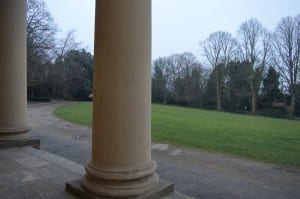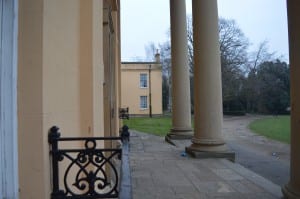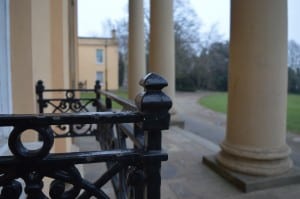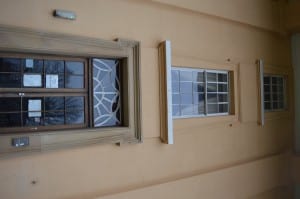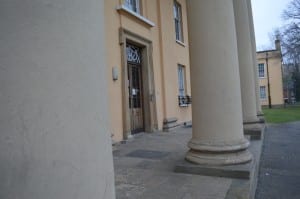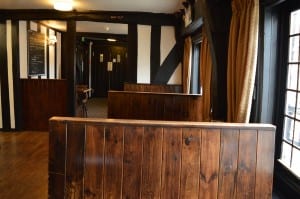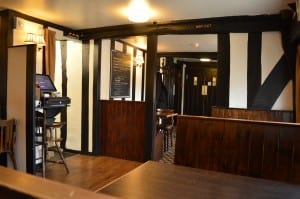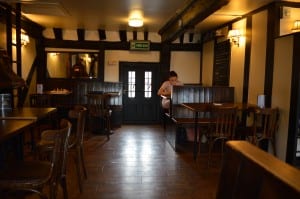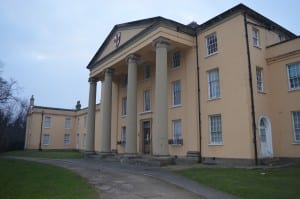Site Specific Final Blog
Framing Statement:
We had been the given the city of Lincoln to go and explore and to create an audio tour for. We chose to focus our piece on the First World War as we felt that the city of Lincoln has a very strong connection to the war. As an all-female group we wanted on focus on the women of war, a lot had changed for the women of Lincoln and we wanted to give those women a voice. Our piece is not focused on trying to replicate the past in minute detail but to merely re-present echoes of the past. Just as Mike Pearson had done in his performance entitled Bubbling Tom (2000) this performance was set in the nineteen fifties, but rather than attempting to take his audience directly back to that time, he represented traces of the past through gestures and speech, he states “I evoke this place fifty years ago: performance as a lens or filter, residing exactly over the current every day.” (Pearson, 2010, p55) this was similar to what we aimed to do with our performance. We knew that it would be impossible to create an exact replica of 1915 but we can use elements of that time to create a filter or layer over the present day.
The audio that the audience will be listening to will have the sound effects of the war and of machinery to represent an essence of the munitions factory. Whilst the audio will be set in 1915 the interactions that we have with the audience will be current day, as in we will not be acting as if we are in 1915 as that would not work, the audience knows that we are not in 1915 and the interactions are not as isolated compared to the audio. Although those moments are set in the present, they will be reflections of the past. We will, with the audience, perform actions that reflect on the work of the Lincoln war workers. For example the building of the aeroplane is a reflection of how the munitions workers of Lincoln were the first to create the tanks and aircrafts for the war in 1915, but we will be making foam aeroplane toy as ourselves. We will be creating our own memories for the audience to look back on, as we look back on the work and roles of women during the First World War.
When discussing working with memory in performance Mike Pearson states that memory “might indicate for the popular imagination how we ourselves, and our immediate environment, are part of a historical process.” (Pearson, 2010, p57) The piece that we have created has lot of focus on memory, this is something I had experimented with in relation to the reliability of memory and the flexibility of certain memories. However, something that I had neglected to think about, until after I had performed these experiments, is that we ourselves are creating our own memories within the performance. Taking video clips of the interactions that we had with the audience members, leaving our own online trace with regards to these blogs. Going back to the idea the nothing is ever truly present.
Analysis of Process:
At the very beginning of this process we had been asked to get into groups of five and had been given a document which was entitled A Starter Kit For Drifters it outlined the step – by – step process in order to carry out a Drift. “You can drift anywhere. But to begin with, start somewhere you know well” (Smith, 2015) we decided to start our drift near the town centre of Lincoln. We began to follow a path which lead us to Beaumont Fee, we followed this road round to Drury Lane, and we continued walking and eventually came across the Museum of Lincolnshire Life. Whilst visiting the museum we became inspired by the women of war and more importantly the women workers of war. It is a topic that I feel our group have really engaged with. So having begun researching the women workers in Lincoln, I found an article that was focused on one worker in particular. The article outlined the average work hours for women in “War Work” and tells the story of Florence Bonnett’s work and life as a Munitionette.
Florence Bonnett had left school at the age of 13 and joined the family business as a fishmonger. During which time she had signed up for “War Work” at William Fosters. She was making tracks for the first tanks and would have had to have worked 12 hour shifts. There are quite a few things in Florence’s story that I felt a connection with, firstly that my granddad, uncle’s and dad all used to be fishmongers and secondly that my grandmother’s maiden name is Bonnett, I tried to research my family tree to see if there had been any connections unfortunately there was not. However, it was interesting to find out that Florence original lived on Monson Street, this had been an idea that we thought of developing for the tour but as our research progressed and the more we went to the museum we really wanted our tour to finish there, and Monson Street was too far away for this. However, we still wanted to share Florence’s story as she was a very strong connection to Lincoln and myself and we felt that her story was one that needed to be told.
From the start of this module we knew that our performance had to be an audio piece and with our piece being focussed on the First World War I decided to find out what sound technology had been like during this time “technologies associated with sound and sound reproduction did not have significant effects within theatre and performance until the decades following the Second World War.” (p203, Baugh, 2005) with the lack of sound recordings from the first world war and its connections with Lincolnshire, we felt as though this was an era that needed a voice and we were able to give them that voice. Being at a time where nobody in the country had experienced a war such as this, it is important that the events of this time are documented and expressed. This was a time when the country relied upon women to carry out the duties of the men. A time when women had to hold up the forte back home for when their men came back. It was a chance for women to break down the barriers of the stereotypical masculine roles and show that women could be as strong as men or even stronger.
In our piece we not only wanted to demonstrate the physical labours that the women had to undertake in their employments, but we also wanted to show the emotional strains that the war had on the women back at home. We wanted to give Amy Beechey a voice. Being a mother of eight sons, all of whom had gone to fight for their country must have been the most heart-breaking time for her. As their mother we envisaged that she would be proud that her sons would show so much loyalty to their country but the pain of having to say good bye to all of your sons never knowing when or if they would come home, must have been the most excruciating anguish that anyone could endure.
as technology began to be introduced to the theatre some people were concerned with its effects on staging a realistic performance, “a majority of those who rejected the language of the stage did so in the name of a greater truth and ‘Reality’” (p207, Baugh, 2005) but in fact these technologies could bring people closer to a more realistic type of theatre. Using mechanics such as lighting, projections and sound/ audio can bring forth a truer reality to its audiences. Sound in particular has the ability to expand an audiences mind and emotions, if hearing certain words and sounds can connote different feelings for different people, creating their own interpretations of the performance. When creating the soundscapes in our piece we all had different feelings and images come to mind that we could have applied to the piece. This then allowed us to further manipulate the sounds, creating a whole new meaning for ourselves. This will later be further developed by the audience’s feedback, the feelings that it has created for them will be taken in t account and therefore inputted into the piece.
“The theatre buildings were usually inappropriate for theatrical experiments and generally had inadequate sonic or electrical resources” (p29, Baugh, 2005) although the lack of resources is important to note here, practitioners found the theatre to be an inappropriate space to stage their performances or to experiment with. Getting out of this traditionally confinement allowed for more untried art to be produced. This then became an influence on our site specific performance, giving people the ability to develop more intrusive and investigative performances with regards to the space they have chosen.
We knew that with our piece being an audio based in the past we knew that we had to take into consideration the fact that 100years has passed since the First World War, the surroundings, the environment that the audience members would be travelling through would be modern. The public would be dressed in modern clothing, using technology that well surpasses that of 1915. Our audience members would have a constant reminder that they are still in the present, this would be clear from our interactions. An audio tour offers “chance strategies for creating spontaneity, inventiveness with found objects…everyday life as stage all figure in the expanded scope of artistic action” (Labelle, 2006, 54) a combination of everyday life, the performative actions of the tour guide and the sound scape create and immersive experience for the audience, “to immerse a viewer, the move towards Happenings and Environment sets the scene for an absolute blurring of art and life.” (ibid) our performance aimed to blur the life of today with the life that the women had lived in 1915.
We knew to plan for all possible outcomes on the day we knew that by having our audio piece take place outside there would be am possibility of all types of weather conditions that could occur. As Max Neuhaus had done with his production of Drive in Music (1967) it was important for the audience to stay on a specific path and to close to the transmitters otherwise the audio would not work properly “the presentation of sound work had to contend with an increased set of conditions determined and made explicit by that space of the public” (Labelle, 2006, 155) as with our piece it was the tour guides duty to keep the audience on the right path and to allow for the audience to match the pace of the audio. This is something that we had practised with each other and with audience members before performing for the final piece. After experiencing the walk with our tutor, we mentioned not being able to perform some of the chalk tasks due to the rain. Our tutor stated that she found that the rain would add to the performative action of having to repeat the chalk. In our seminars she had talked about palimpsest, this was something that we as a group became interested in incorporating this into our piece.
A palimpsest is defined as “a manuscript or piece of writing material on which later writing has been superimposed on effaced earlier writing.” (OED, 2015) so where writing has been erased and someone has written over the top of this. A theatre company called Palimpsest, they are not site specific based but they do produce a lot of performances involving multimedia and re-presenting traces of classic plays, they “examine the original text through the prism of web design and film, creating a layered world that can be explored online by the audience member in the days that lead up to and follow the live performance” (Smith, 2015) we decided that during the sequence that we had created that related to the school we would write the surnames of the women on the boards and wipe them off and keep writing their names over the top, to create a blurring of the name and demonstrate the sacrifices that each woman had to make during the war. Also by having these actions placed in a school setting symbolises how the audio track is a way of teaching the audience members about the lives of these women.
In our piece we had decided to have an interaction take place in a sweet shop, this was so that the audience member could buy some sweets, Laura Cooke had researched the types of sweets that had been bought the most during the First World War, she states “After researching what penny sweets children would eat during the war, liquorice appears the most popular” (Cooke, 2015) we had planned to hand the audience members 20p each and to go into the sweet shop and purchase a stick of liquorice. The liquorice being sticky, black and thick was also a physical representation of the oil and dirt that the women would get on their hands while they were working. Along with purchase of liquorice, we created a soundscape from sounds that we had recorded from the sweet shop, using various effects in audacity we managed to create a ringing sound that when we listened to it we thought of the ringing in your ears after hearing loud noises and then related this to the ringing after a bomb has exploded.
Evaluation:
Something that we had to deal with during our performance was the weather conditions due to the fact that the audio took place entirely in the open air. On the day of the final performance we had performed that day to two separate groups the first group happened to be able to experience the journey in sunny conditions without any wind, allowing them to fully participate in all interactions and experience the audio without any faults or difficulties. However, the second group experienced the audio in an extreme down pour of rain.
We had planned for what would happen if it was to rain during the tour, umbrellas would be handed out to the members of the audience and the interactions that would have been effected we knew this so we tried to use to our advantage. During the paper planes interaction we had planned to continue through the rain, even if it was difficult we felt this would have had a better relation as it would have reflected on the hard labour that the women and men had to endure on a daily basis during the war, however the rain had become so bad that the planes had nearly turned to mush and carrying on through to the school interaction we had planned to allow the rain to help with the washing away of the names on the chalkboards, however the rain had become too bad that we had to change our seating arrangements, we were to be spread out across the benches to symbolise a school but due to the rain we had to sit closer together.
Although the weather had been a problem, in some of the feedback the audience had said that the sound of the rain worked well with the audio. The moments when Amy Beechey is reading out the letter her son Barnaby had written to her, the poem of the working women, War Girls (1916) by Jessie Pope with sound effects of marching soldiers combined with the rain could really create the sense of the trenches.
I believe that the audio we created was how we had wanted it to sound like from the beginning a combination of soundscapes, poetry and monologues all from the women of the First World War and more importantly the women of Lincoln and the roles they had to take on during this time. The feedback that we got with regards to the audio was very positive, the audience found that the audio was edited really, this I felt particularly proud of as I have never used sound editing software before and have become fairly good at it. The overlapping of the narrator with the Florence’s monologue was used as a way to show a transferences, the present day handing over to the past allowing them to tell their story.
Throughout this whole process we never worried that our performance was not site specific. Some of the feedback we received questioned how our performance is site specific. In my view I believe our performance is site specific because it cannot be performed anywhere else, we speak specifically about Lincoln, women from Lincoln. We had been inspired by the Museum of Lincolnshire Life, for this to be performed anywhere else, I feel would not have the same effect and would not work as at the end of the audio we offer the audience to enter the museum and find out more about Lincoln and the Munitionettes.
The practise of site specific has shown me the effects of that sounds can have on a person, the emotions that can be evoked from soundscapes and tone of voice is something I have learnt a great deal and to be able to record in a way that I know will be easier to edit with later. To pause more, to record in sound proof spaces but that are still not so empty that it creates an echo. All these skills that I have learnt I can now apply these to future performances and has expanded my experience with other technologies.
Bibliography
Baugh, C. (2005) Theatre, Performance and Technology. Palgrave Macmillan. Basingstoke
Cooke, L. (2015) Research- War Time Songs and Sweets eaten during the war- Laura Cooke [online] https://sitespecific2015ksa.blogs.lincoln.ac.uk/2015/02/09/research-war-time-songs-and-sweets-eaten-during-the-war-laura-cooke/ [accessed on 13 May 2015]
Corbin, A. (1916) The Fallen. [online] http://allpoetry.com/poem/8551421-Fallen-by-Alice-Corbin [accessed on 28 April 2015]
Labelle, B. (2006) Background Noise Perspectives on Sound Art. Continuum International Publishing Group. London
OED. (2015) Palimpsest [online] http://www.oxforddictionaries.com/ definition /English / palimpsest [accessed on 27 April 2015]
Pearson, M. (2010) Site Specific Performance. Basingstoke: Palgrave Macmillan.
Smith, D. (2015) About us. [online] http://www.palimpsest.co/index.html [accessed on 27 April 2015]
Smith, P. (2015) A Starter Kit for Drifters: Five Steps to Drift or Dérive [online.] http://www.mythogeography.com/starter-kit.html [accessed on 12 May 2015]
